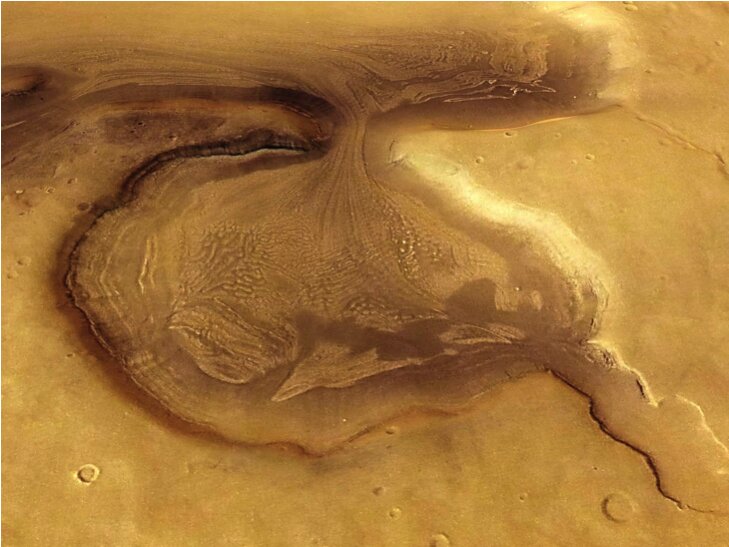Planetary scientists of the Institute of Astrophysics and Space Sciences modeled using a simulator
One of these questions was whether or notlack of methane on Mars. An analysis of images from the planetary Fourier spectrometer installed on board the Mars Express spacecraft showed in 2019 the presence of methane accumulations above the surface of the red planet. However, in the same year, the Mars TGO research apparatus determined the concentration of methane in the planet's atmosphere as negligible.
This discrepancy can be explained by the possiblespatial and temporal variability of methane content in the atmosphere, scientists note. There can be various sources of methane on Mars: volcanoes, meteorites, comets and interplanetary dust or biological organisms. In addition, there are many factors that affect the destruction of methane in the atmosphere. The researchers were able to pick up the conditions under which one of the research vehicles recorded the presence of this gas in the atmosphere, and the other did not.
“By changing the parameters of our simulation, wewere able to resolve these contradictions, to find out under what conditions and where methane can be found. This is an important step towards understanding the relationship of methane on Mars to the possible existence of life,” explains Pedro Machado, a researcher at the Institute of Astrophysics and Space Sciences and co-author of a paper published in the journal Atmosphere.
Another question that scientists have been working on isthe fate of much of the water on Mars. Evidence suggests that water once flowed on this planet, and a huge ocean occupied most of the northern hemisphere. Today the planet is an icy desert.
Planetologists using PSG have estimated the ratio of hydrogen and deuterium in the Martian atmosphere. The researchers believe that this will help to understand the evolution of water on the planet.
Deuterium is a heavy isotope of hydrogenone more neutron. Therefore, water, consisting of one atom of deuterium and one atom of hydrogen, is heavier than “ordinary” water, and it is more difficult for it to fly into space, says João Diaz, head of the study. “Comparison of the ratio of deuterium and hydrogen at the global and local levels, which can be modeled, gives us valuable information about the evolution of Martian water.”
 Geological evidence for the presence of water on Mars in the past. Photo: NASA
Geological evidence for the presence of water on Mars in the past. Photo: NASA
The researchers also analyzed the contentphosphine in the atmosphere of Venus. This gas can be spontaneously created from phosphorus and hydrogen under conditions of high pressure and temperature. This is exactly how the researchers note that it appears on Jupiter. However, on small planets it is usually associated with the activity of living organisms. That is why the discovery of phosphine in the clouds of Venus in 2020 made scientists talk about the presence of life on the planet.
"Further research carried out in otherconditions showed that phosphine may not be present at all or present in much smaller amounts than was originally established. Our simulations confirmed this theory,” says Pedro Machado.
In addition, according to scientists, modelingallows them to assess the presence of sulfur dioxide in the atmosphere of Venus, which is associated with volcanic activity on the planet. The main achievement of the work, according to the authors, is that it demonstrated the effectiveness of using PSG to model the atmosphere of the planets of the solar system and exoplanets.
“Our work is of great importance forplanned space missions such as EnVision, Ariel and Mars Express. Modeling shows the expected sources and content of chemicals in the atmosphere. This data will allow us to select the exact instruments and sensors that will be used on spacecraft,” adds Pedro Machado.
</ p>Read more:
Nuclear fusion no longer needs millions of degrees: how the new method works
Aircraft A380 completes first vegetable oil flight
Engineers have created a chip for sorting spermatozoa. It will help with infertility